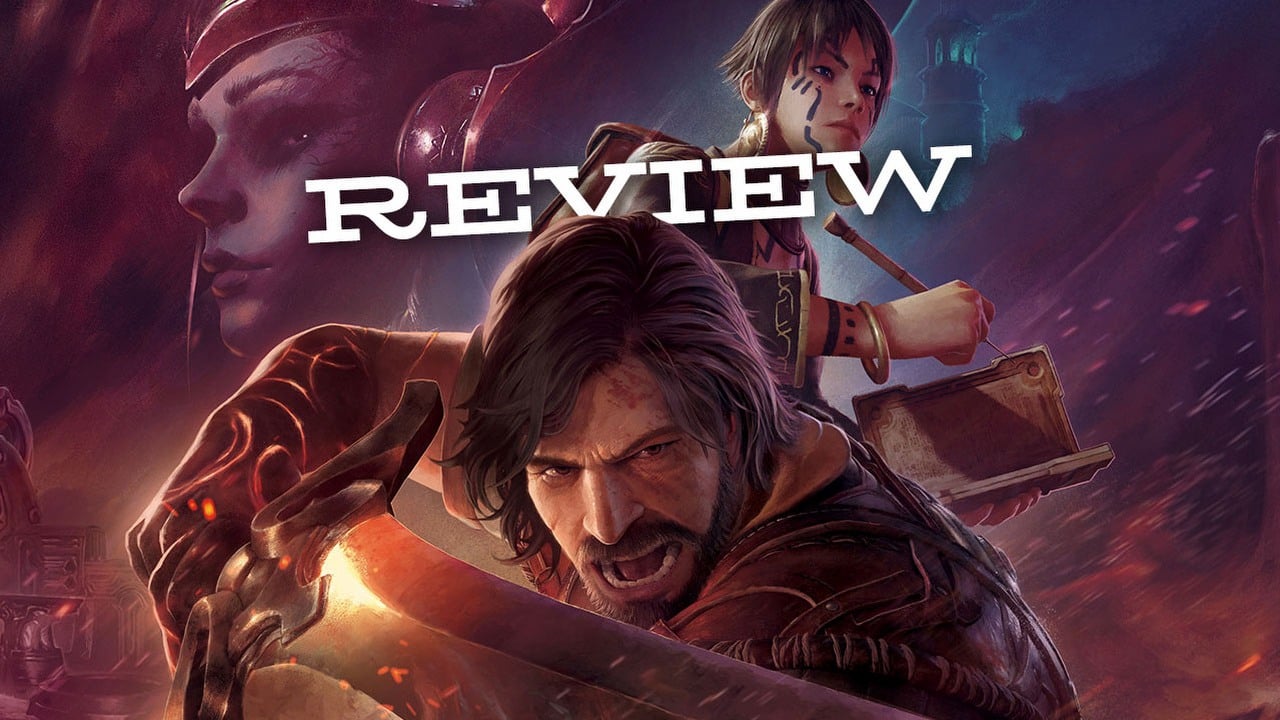
Blades of Fire has a somewhat appealing impact on me. MercurySteam successfully infused a dash of novelty into the Action RPG genre by designing its combat mechanics and weapon creation system. These elements are undoubtedly the game’s highlights, although it does have its imperfections. The narrative seems to resemble a teen drama series, and the game world can become monotonous over time, possibly due to excessive expansion.
Welcome to the world of steel encased in stone
In “Blades of Fire,” it’s clear that both you and the protagonist, Aran de Lira, are equally in the dark about the story’s events. If a certain opponent or character isn’t encountered, they might as well not exist for either of us. Regrettably, despite Aran’s worldly experience, he is remarkably clueless. It’s his younger companion, who we rescued from trouble at the outset, who ends up being the font of all knowledge.
Adso jots down records, enriching them with tales that bridge the gap between known cosmic lore. In ancient times, the Forgers reigned supreme, crafting not just weapons but also sophisticated machinery. Then came the Thaumaturges, eager to amass power through magical spells. A fierce conflict ensued, leaving no clear victor and causing both factions to vanish from the face of the world, or so it seemed.
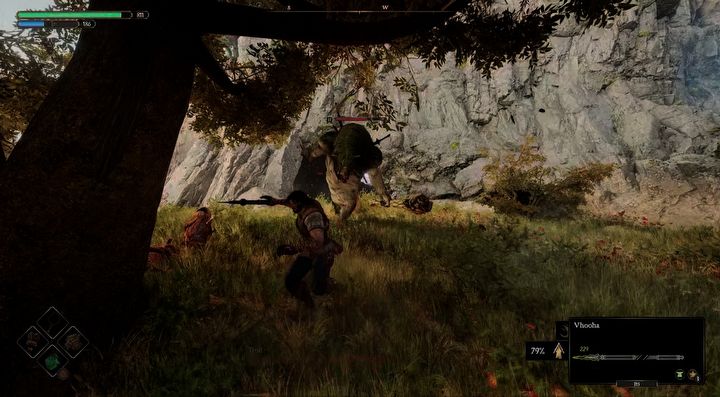
The goal seems reminiscent of a classic fairy tale where our hero, a valiant knight-like figure, must dethrone an evil sorceress who has seized power. Along the journey, we meet her minions, and at times it feels as though we’re playing out a popular TV series aimed at young audiences.
To neutralize the queen’s magical abilities, we were given a potent artifact: one of the seven hammers wielded by the Master Forgers, who now carry on the tradition started by the original Forgers. This artifact allows us to travel instantaneously between locations and craft weapons that aid us in battle.
Returning to the atmosphere of the teen series: this story tackles some heavy topics, yet it doesn’t forget to inject humor that creates an interesting contrast with the gravity of the situation. However, the larger world doesn’t play a significant role here. While characters discuss various subjects, we don’t get detailed insights about them. Instead, crucial information is kept in a notebook, and our guide recommends us to read it if we want more details. This narrative approach feels unique compared to other stories I’ve encountered.
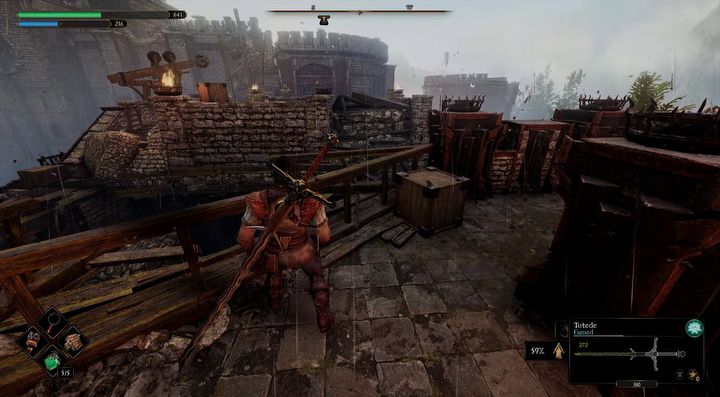
The prolonged playtime of “Blades of Fire” is excessive, as I found myself growing weary just a third into the game. Despite its innovative combat system, it failed to salvage the situation. Regrettably, this could be due to its fresh take on the current trends in Action RPGs.
Time of hammer and anvil
Conflicts are what make Blades of Fire truly captivating, along with the crafting aspect. In this game, each of the four control buttons represents strikes coming from various directions: left, right, up, and down. This is significant because enemies can wear diverse gear, and a strike to the head, for example, might be more potent than one to the arms. Additionally, if a boss is invincible from the upper body, we must attack from below to deal damage to him.
As a devoted fan, I must say, the game offers an array of weaponry, boasting three distinct types of attacks: blunt, slash, and thrust. Each enemy seems to have varying degrees of susceptibility to these attack styles. Consequently, it’s crucial for us to assemble a versatile arsenal to tackle every challenge that Blades of Fire presents.

I thoroughly enjoyed the battle experience, despite some adversaries possessing particularly irritating abilities. Defeating them provided more relief than joy. I appreciated one unique feature, alas, it was exclusive to a single enemy – the troll. This fascinating aspect involved diminishing its health bar by one point, prompting it to commence metamorphosis into stone. Subsequently, you’d need to administer a powerful blow to sever a limb, halting the transformation and inhibiting regeneration. Truly, this innovative approach to fight design was captivating. Unfortunately, beyond the troll, this mechanic didn’t seem to be applied elsewhere in the game.
The thrill of combat is matched by the process of equipping your character, which doesn’t involve traditional armor, helmets, or amulets. Instead, we focus on weapons, and you must craft these tools yourself. You can unearth new battle instruments by vanquishing a specific number of adversaries wielding them. During our journeys, we gather materials to forge weapons and uncover novel enhancements, like extending the length of swords or reinforcing spear shafts.
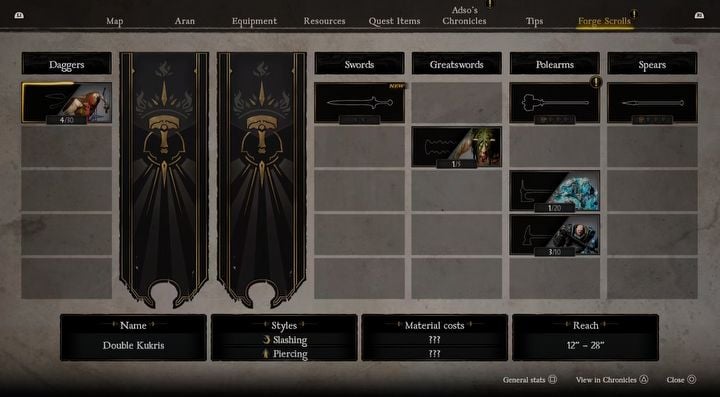
The attributes of the weapon you craft, such as its strength, durability, stamina consumption, and ability to deflect attacks, are all influenced by your creation. It’s crucial to strike a balance in these aspects for your weapon to perform well in battles. Yet, there’s more to it than meets the eye. The weapon, you see, needs to be crafted literally – design it first, then engage in a mini-game where you shape metal to match the design. The better your workmanship, the more stars you earn, each star representing one improvement.
Every piece of gear has an expiration date, and when weapons become worn out, you can trade them for parts with non-player characters (NPCs).
The fighting and weapon crafting aspects of Blades of Fire are undeniably its standout features. These elements make the game truly distinctive, and I have no doubt that if it continues in this vein, it could easily attract a dedicated fanbase who would eagerly await a sequel or another title with a similar theme. There’s certainly room for growth here, and I can only hope that the concept isn’t confined to just one game.
- Combat system is satisfying;
- crafting tests our skills and is engaging;
- audiovisuals can impress.
CONS:
- Exploration in the long run is tiring;
- loading screens kill the pace of the game;
- not very engaging plot.
Long journey…
In role-playing games (RPGs), the sense of exploration is crucial. As I embark on my journey within the virtual world, I yearn for the thrill of discovering novel locales and am driven by the desire to uncover hidden secrets. While Blades of Fire offers its share of exciting moments, I frequently find myself taking a break from the game not due to fatigue from prolonged play, but because the experience was becoming monotonous and tiring.
In the realm of Blades of Fire, there are similarities to the world design found in games by FromSoftware. Initially, you navigate through primarily linear areas that offer shortcuts for exploration. However, as you progress, the map layouts tend to deteriorate. While the first chapter presents a visually appealing landscape, from the second stage onwards, things start to look less polished. Complex mazes and narrow platforms filled with adversaries who can easily knock us off become more frequent, making the experience increasingly challenging.
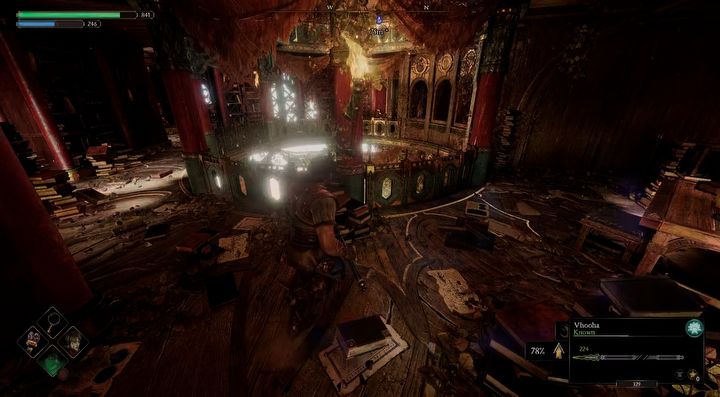
In addition, the layout of certain stages is subpar, particularly with regard to the placement of checkpoints. Initially, these checkpoints are positioned inconveniently, making it frustrating when I discover a new one, followed by a shortcut like a gate or ladder, only to find myself back at an earlier checkpoint. It’s confusing why they are so close together, especially considering that in other instances, there’s only one checkpoint covering a vast area. Dying means having to traverse a long distance again, which is inconsistent with the design where sometimes there’s only one checkpoint over a large area.
In the second act, a notable moment occurred when we approached a district featuring an arena and adversaries. Two towering structures nearby were emitting green flames, posing a risk as they would send us back to the arena’s center if hit. The challenge was that one of these structures stood right beside the door we needed to unlock. As opening the monoliths would trigger their attack, resulting in our return to the arena, followed by climbing a ladder behind the door to progress the narrative, I can’t forget how long I struggled to ascend that ladder. It seemed like a dead-end at times, as it was hard for me to believe such a critical main story element could be handled so poorly.
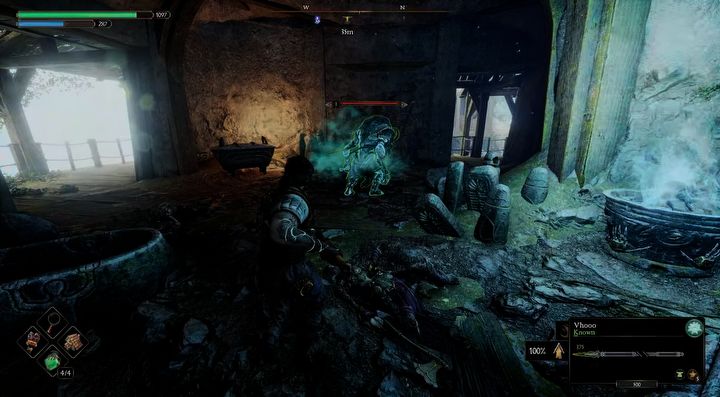
In addition, sometimes the game lacks clarity about what actions are required. For instance, on the initial map, at a certain stage, we follow a small skeleton, expecting that this would lead us somewhere significant. However, it’s unclear what is expected next as there’s no interaction or cutscene. This confusion arises because you were actually supposed to explore the nearby shelves to discover a ladder concealed behind a desk on the second floor, but that wasn’t explicitly stated.
Audiovisual pleasures
In Blades of Fire, I stated that fighting and creating are its standout features, but there’s a lot more to it than just that. The game boasts an impressive aesthetic, with its visuals and music really setting it apart. Hearing the sound of weapons being forged is quite thrilling, particularly when those sounds vibrate through the DualSense controller. The music is also appealing, although the soundtrack could be more expansive. Some tunes, though cool, are repeated across multiple stages in different chapters, which somewhat diminishes the uniqueness of each map.
As a gamer, let me tell you, each map in this game is uniquely different yet seamlessly consistent, setting it apart from others. From the very start, you can tell that no two areas are alike – we begin in a burned-down settlement, venture through swamps, explore an ancient fortress, wander the graveyard, and finally reach the castle. Every single detail looks fantastic, and nothing seems out of place or mismatched with the overall atmosphere.
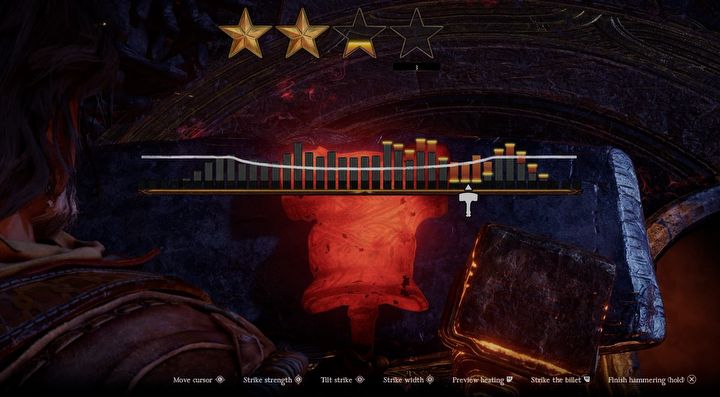
In addition to allies, this situation applies to opponents as well. I encountered one type that seemed out of place within a specific lore, but otherwise, I had no issues voicing my dissent. However, since the combat was engaging, it didn’t matter much. Needless to say, this enjoyable experience wouldn’t have been feasible without the animations involved.
In this game, the characters are exceptionally well crafted and it’s delightful to navigate with such a responsive character. On the whole, Blades of Fire seems reminiscent of Lords of the Fallen 2 from 2014, except that the main character’s movement in Lords felt painfully slow, as if he was constantly wading through thick mud. However, Blades of Fire has significantly improved upon this by implementing a separate action button for jumping when you reach an edge, which helps prevent unwanted falls (although it doesn’t eliminate the possibility of falling entirely).
The dialogue can be improved, as it often seems scripted rather than naturally spoken, lacking emotion or nuance. Additionally, the characters tend to stay stationary while speaking, making their movements appear mechanical, even during key scenes.
Blades of Fire runs well, but not without issues
Regarding its performance, “Blades of Fire” generally runs smoothly and seamlessly most times, which is vital in a game where quick reactions to an opponent’s moves are essential. However, there was one instance when the frame rate significantly slowed down – specifically during periods of thick ground fog, and this apparent slowdown noticeably impacted performance.
Instead of that, let me tell you this: Long waiting times during loading screens can be quite inconvenient. When transitioning from one checkpoint to another, there’s often a short period of loading which can become irritating, especially when we’re in the middle of crafting a weapon, re-entering an area we’ve already visited, and then recall that we also needed to create something else or move to another map. Unfortunately, this means we’ll have to endure more loading screens since things here don’t seem to load swiftly.
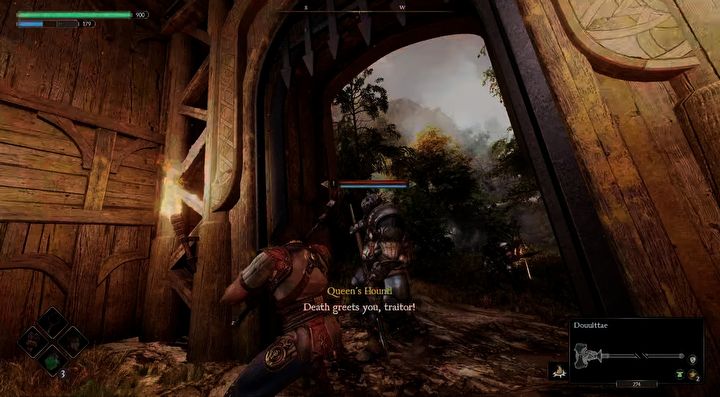
In addition, there is an issue with characters becoming trapped on certain textures. The primary character can become stuck on a stack of books, and if not handled carefully, he may find himself cornered with no possibility of escaping from a swarm of enemies poised to dismember him. Nevertheless, these are problems that could be addressed through updates.
A solid average, but nothing more
All things considered, “Blades of Fire” can be considered a fairly good, average video game. It boasts impressive graphics and runs smoothly. What sets it apart from other games in its genre is that the developers have successfully infused a unique, distinctive feature into it, which gives it an edge over its competitors. This distinctive element has been refined to perfection, making it more than just an empty shell; it forms the core around which the gameplay revolves.
The design of the map generally works well, yet some spots contain congested features which make exploration laborious and somewhat frustrating. To add insult to injury, the narrative isn’t captivating enough to encourage continued advancement.
Read More
- Who Is Harley Wallace? The Heartbreaking Truth Behind Bring Her Back’s Dedication
- 50 Ankle Break & Score Sound ID Codes for Basketball Zero
- 50 Goal Sound ID Codes for Blue Lock Rivals
- KPop Demon Hunters: Real Ages Revealed?!
- Lottery apologizes after thousands mistakenly told they won millions
- Ultimate AI Limit Beginner’s Guide [Best Stats, Gear, Weapons & More]
- 100 Most-Watched TV Series of 2024-25 Across Streaming, Broadcast and Cable: ‘Squid Game’ Leads This Season’s Rankers
- Basketball Zero Boombox & Music ID Codes – Roblox
- Umamusume: Pretty Derby Support Card Tier List [Release]
- J.K. Rowling isn’t as involved in the Harry Potter series from HBO Max as fans might have expected. The author has clarified what she is doing
2025-05-20 18:04